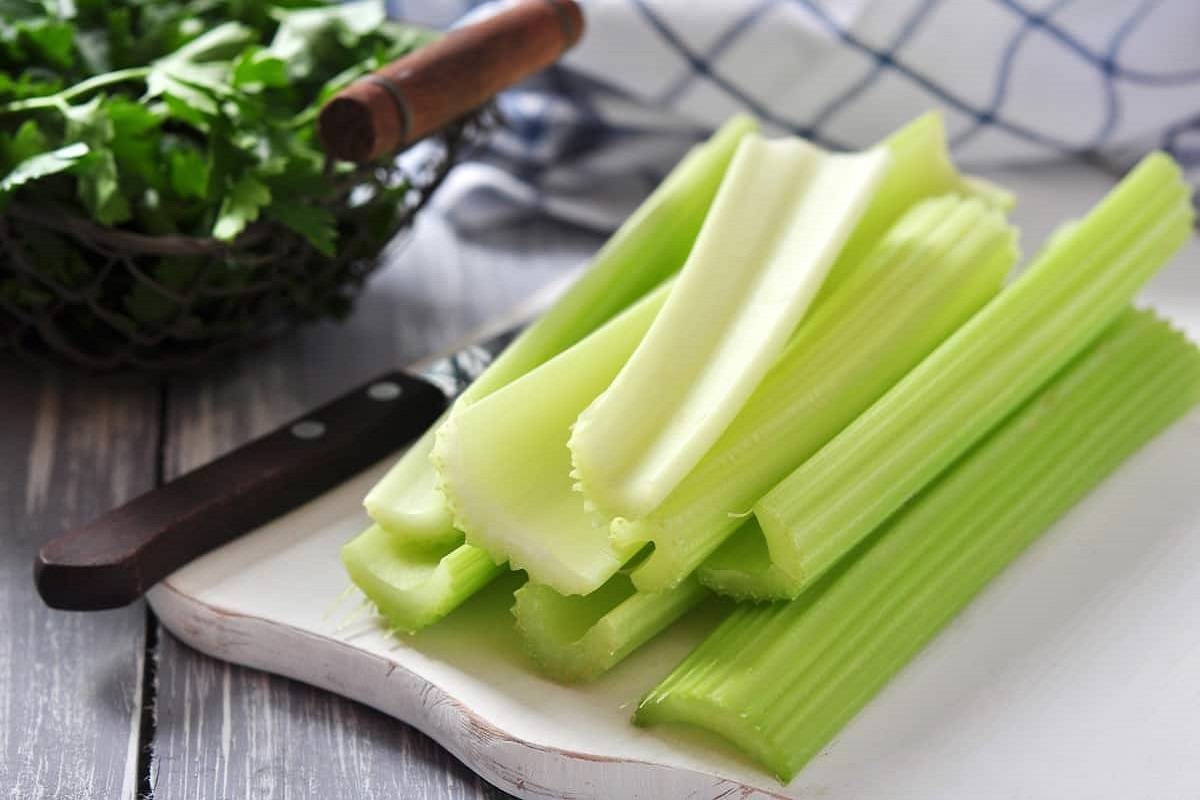
Celery is an herbaceous plant of the parsley family (Apium graveolens). The most common way to eat celery is cooked, either as a vegetable or as a subtle flavoring in a variety of stocks, casseroles, and soups.
Summary:
Botanical Name: Apium graveolens
Family: Apiaceae
Plant Type: Vegetable
Sun Exposure: Full sun
Soil pH: Neutral
Raw celery is used in salads in the USA. It is also sometimes served with spreads or dips. The small celery seed-like fruits, sometimes known as celery seeds, are used as a seasoning, especially in soups and pickles, and taste and smell similar to the celery plant itself.
Though they are short-season variants and are often planted as an annual for their 12- to 18-inch edible stalks, it is regarded as a robust biennial.
Due to the requirement to grow celery from seed indoors (transplants are difficult to locate and do not always succeed) and the plant's propensity to bolt in cold weather, celery is regarded as a rather challenging crop.
Origin of Celery:
This crop is a native of the Mediterranean region and the Middle East. The ancient Greeks and Romans used it as a flavoring, while the ancient Chinese used it as medicinal. The prehistoric versions were similar to smallage, or wild celery. The late 18th century saw the development of celery with enormous, thick, succulent, erect leafstalks, or petioles. Some types of celery have lost the stringiness that is typical of most celery.
Celery is one of the challenging vegetables to cultivate at home, but we always have a spot for it in our gardens because of how helpful it is in salads, stews, stir-fries, and soups.
Types and Varieties of Celery:
There are two varieties of celery: trenching and self-branching.
To grow crisp, white-stemmed, trenching celeries, the soil needs to be mounded up against the stems as they develop. As the name suggests trenching celery is usually planted in trenches, to make this procedure simpler, however, other gardeners help with this blanching process by using cardboard tubes, pipes, or collars.
However, self-branching celery doesn't call for any of these extra processes. Because of this, it is simpler to cultivate and the stems are as delicious!
As per your preference, you can grow any of the below-mentioned types of celery:
-
'Afina' is a sturdy, quick-growing type that grows tall, thin stalks up to 30 inches in height (60 days to maturity).
-
Conquistador can tolerate greater temperatures, water restrictions, and ordinary soil fertility.
-
The heritage dwarf variety "Golden Self Blanching" has stalks without strings. It works well in little gardens.
-
For gardeners with little space, "Utah 52-70R Improved" is a suitable choice. It is resistant to disease and will only grow to a height of 18 inches.
How to Plant Celery?
Celery prefers rich, composted, or well-rotted manure-enriched soil that has been improved. Because wild celery thrives in soggy soil, you'll need to provide continuous watering for this demanding crop, and a sunny location would guarantee healthy, even growth.
Celery should be exposed to the outdoors two weeks before transplanting. Simply keep your plants outside for a little bit longer each day to achieve this, be careful to bring them inside if frost is forecast.
After the final anticipated frost date, plant them. This is crucial since an unexpected cold snap might force plants to bolt (flower early), which delays the time at which they can be harvested. Celery that has been prepared for planting can frequently be found at garden centers if you missed the time for sowing.
Self-blanching varieties can be planted in a block with a spacing of nine inches (23 cm) on either side. This kind of planting will produce a lot of shadow between the plants and help in stem blanching.
The trenches would need to be somewhat more than a foot (30 cm) apart and about a foot (30 cm) deep in order to plant trenching variety. Choose between the trenching or self-blanching varieties as per your preference.
How to Grow Celery?
Keeping celery plants well-watered at all times after planting can minimize the likelihood of plants bolting or stalks growing stringy. To give plants a boost when they are established, use a nutrient-rich organic fertilizer. When incorporated into the soil between plants, comfrey pellets and coffee grounds are excellent choices. Between your plants, you might also spread an organic mulch, such as compost. This will assist to nourish your plants, keep the roots cool, and save vital soil moisture.
Once the stems are approximately a foot (30 cm) tall, start earthing up trenching variety, banking the dirt up by about three inches (8 cm) every time until you are unable to hill up anymore.
How to Harvest Celery?
When the lower stalks are at least 6 inches (15 cm) long from the ground to the first node, celery is ready to be picked. When celery is ready to be harvested, the stalks should still be closely spaced, making a compact bunch or cone at the right height. When they are prepared for harvest, upper stalks should be 18 to 24 inches (46–61 cm) tall and 3 inches (8 cm) in diameter. Celery can be harvested while being picked, and the leaves can then be used to season stews and soups. For harvesting celery seeds for use in recipes and the seeding of future harvests, a few plants can be left to blossom or go to seed.
Cutting the stalks below the point where they are linked together makes it simple to harvest celery. When picking up the celery leaves, they can be easily plucked with a sharp blade.











